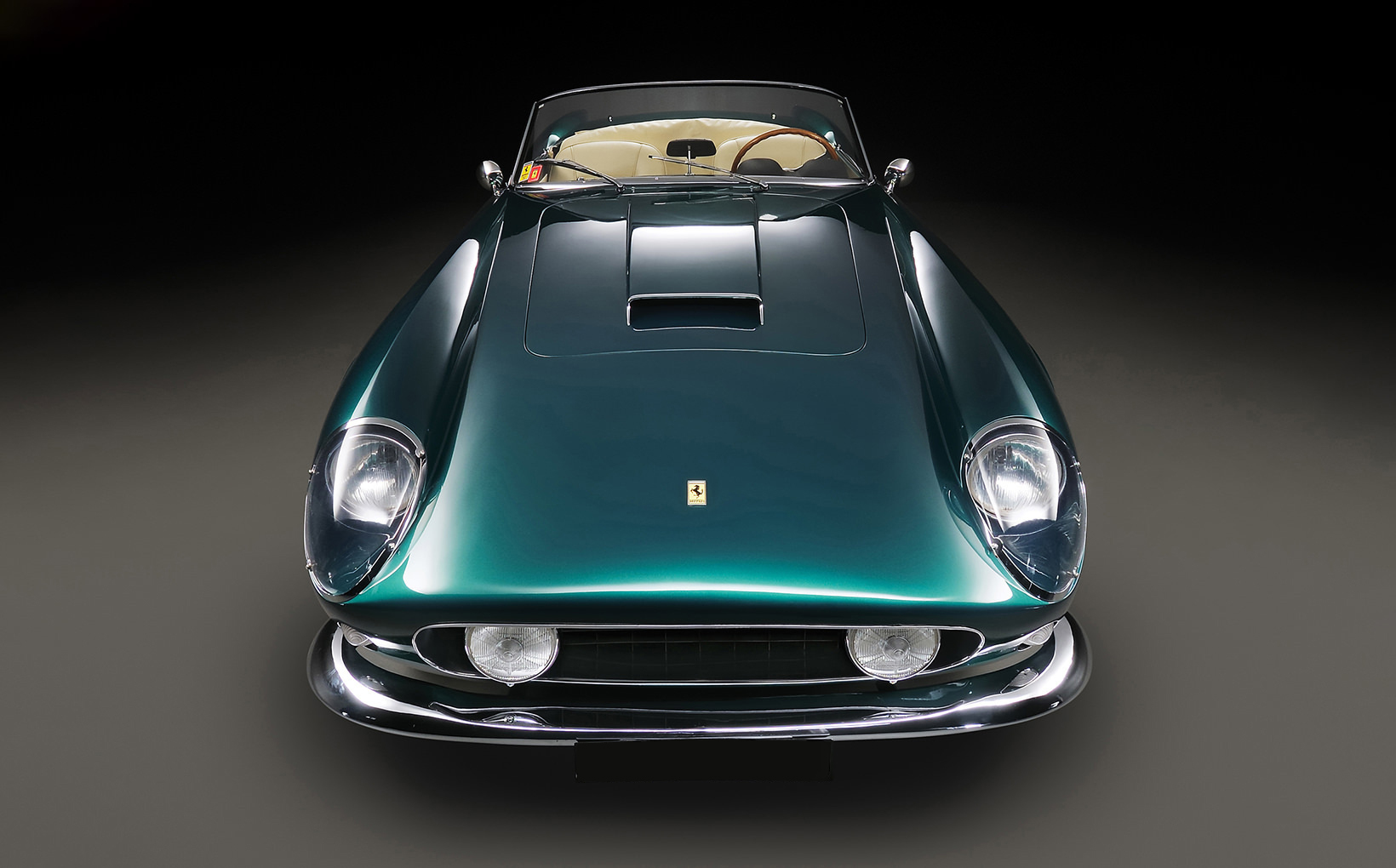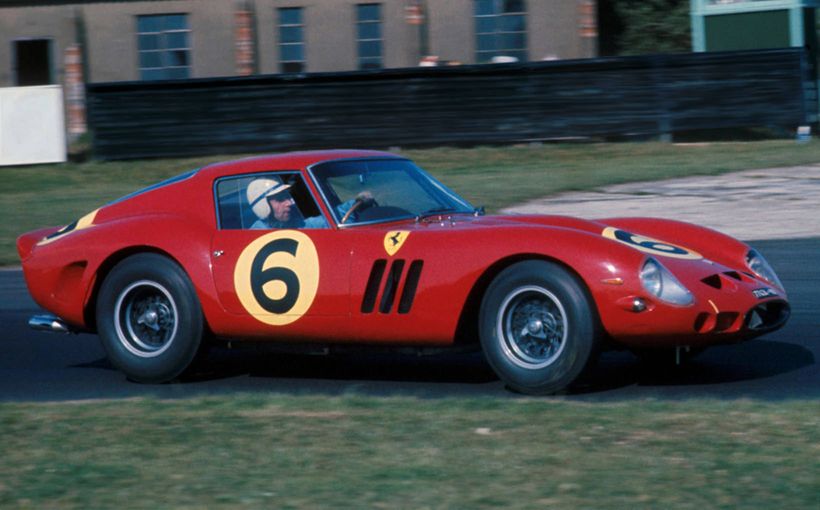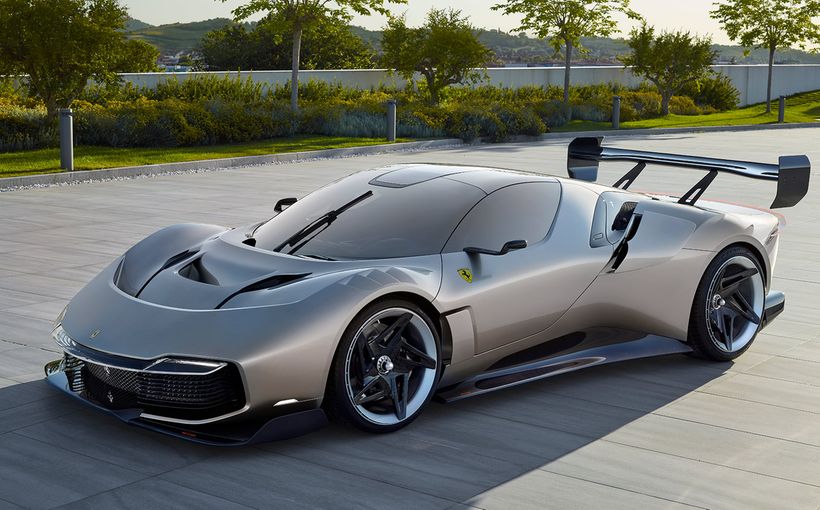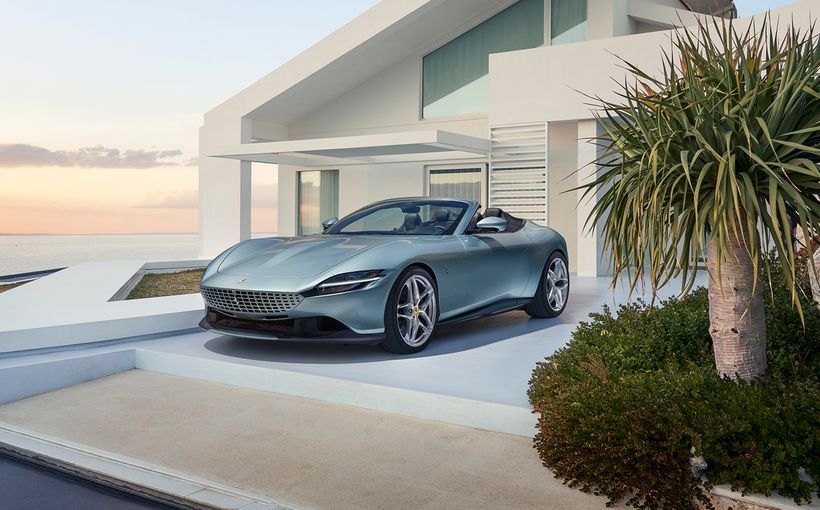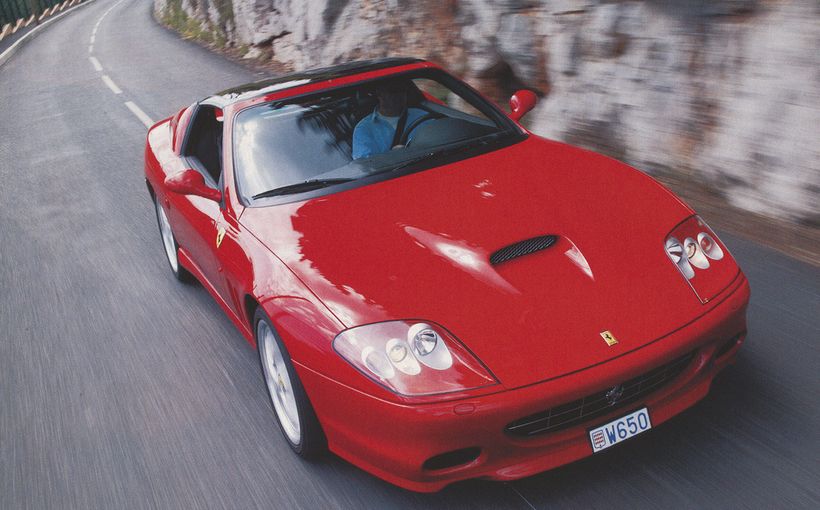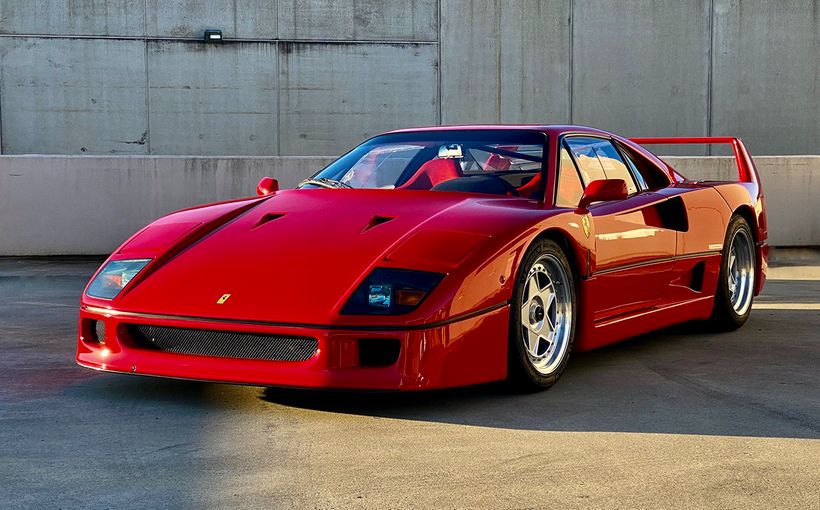250 GT: The ‘series production’ Ferrari that transformed Maranello

Prior to the arrival of the 250 GT, street-driven or ‘touring’ Ferraris were generally built by the handful and available only to an elite clientele of royalty, industry czars and movie stars who could afford them. These special customers typically favoured personalised body styles handcrafted by the finest Italian coachbuilders, so that no two cars were the same.
However, given that the primary role of road car production at Ferrari’s factory in Maranello was to fund Enzo’s motor racing programs, such bespoke and time-consuming car creation was not conducive to consistent cashflows.
By the early 1950s it had become clear that increased bodywork standardisation was needed to allow much greater volumes of road cars, created in a more streamlined ‘series production’ process to increase and stabilise the company’s finances.

Image: https://en.wheelsage.org/ferrari/250
The 250 GT Europa (the first Ferrari to officially use the Gran Turismo or GT name) unveiled at the 1954 Paris Salon laid the foundation for this transformation. The 250 GT remained in production until 1964 and played a pivotal role in the global growth of the revered Italian marque.
According to Antoine Prunet’s The Ferrari Legend: The Road Cars, the 250 GT’s success during that industrious decade is proven by its production numbers. In 1954 the company only produced 35 touring Ferraris. By 1964 annual output had ballooned to around 670 units – a staggering 1800-plus per cent annual increase or more than 20 times larger!
This review focuses on the standardised or ‘series production’ touring coupes, berlinettas and cabriolets, as Ferrari continued to produce myriad 250 GT derivatives – including competition legends like the Testa Rossa and GTO - which justify stand-alone reviews.

Image: https://en.wheelsage.org/ferrari/250
250 GT Europa (1954-1955)
Launched as a show car at the 1954 Paris Salon (motor show), the 250 GT Europa’s styling was a near seamless evolution of the sublime Pinin Farina coachwork that adorned the majority of its 250 Europa and 375 America predecessors.
And that showcased the mastery of the revered Turin coachbuilder or carrozzeria given that the new chassis developed for the 250 GT featured a 200mm reduction in wheelbase to 2600mm. That required a similar reduction in overall length, yet Pinin Farina ensured these changes did not detract from a “more compact and harmonious silhouette” according to Prunet.
Interior space also did not suffer in this downsizing because the 250 GT’s new tube-steel chassis, with more sophisticated coil-springs replacing a transverse leaf in the front suspension, was equipped with the smaller displacement and more compact 3.0-litre V12 designed by Gioachino Colombo.

Image: https://en.wheelsage.org/ferrari/250
It shared the same oversquare bore and stroke as the race-winning version but with three dual-choke 36mm Weber carbs and revised cylinder heads better suited to touring use. Hence the protocol of street-driven Ferraris continuing to benefit directly from racing experience, which ensured they all shared a rich competition heritage. The four-speed gearbox and multi-plate clutch came from the 342 America.
The shorter wheelbase resulted in sharper steering response and greater agility while the suspension changes enhanced ride quality. Combined with the 217bhp (162kW) V12, Ferrari’s first official GT proved more than a match for its Mercedes-Benz 300SL nemesis in both road and competition use.
The Paris show car was the first of 26 examples with homogenous or ‘standard’ steel bodies by Pinin Farina, which heralded the first small but significant step in the 250 GT’s gradual adoption of mass production methods.

Image: https://en.wheelsage.org/ferrari/250
250 GT Coupe Boano and Ellena (1956-1958)
At the 1956 Geneva Salon, Pinin Farina unveiled a stunning 250 GT-based coupe prototype which attracted more than enough interest to justify series production.
At the time Pinin Farina was in the process of expanding his facilities, so engaged the services of Turin’s Carrozzeria Boano under Mario Boano and Luciano Pollo (both formerly of Ghia) to produce the bodywork he’d designed.
Production of the 250 GT Boano reached almost 80 examples, which was another significant step on the path to standardisation. When Boano moved to Fiat in 1957, he handed production duties to his son-in-law Ezio Ellena and Pollo, with the firm renamed Carrozzeria Ellena. Under the new name and insignia, about 50 examples of the 250 GT Ellena were produced with subtle styling revisions.

Image: https://en.wheelsage.org/ferrari/250
250 GT Pininfarina Coupe (1958-1960)
Pinin Farina continued the 250 GT’s evolution with an outwardly simple yet elegant design that could be more easily produced in series production.
The most noticeable styling change was a lower waist line which allowed for a significant increase in window area. The genius in these changes was in creating an impression of greater length, even though the new coupe was 60mm shorter than its Boano/Ellena predecessors.
Manufacture of these bodies commenced at Pinin Farina’s expansive new facilities on the outskirts of Turin. It was also at this time that the coachbuilder’s company name and insignia was changed from Pinin Farina to Pininfarina.
The new 250 GT won plenty of admirers on debut at the 1958 Paris Salon, but some questioned if Ferrari was becoming technically complacent. Prunet: “The press remained sceptical of the usage of drum brakes as standard equipment on this very rapid vehicle. The Aston Martin DB4 which was shown at the same time was equipped with four-wheel disc brakes and even the elegant Facel Vega Excellence offered this equipment as an option.”

Image: https://en.wheelsage.org/ferrari/250
By 1960, 250 GT coupes had standard disc brakes. Other mechanical upgrades were telescopic shocks replacing the old lever-type, stronger crank and rods plus new spark plug locations in the endless evolution of the 3.0-litre Colombo V12 and a new gearbox with electrically-controlled overdrive adding a fifth speed.
Depending on which of five final-drive ratios were chosen, terminal velocity for this potent 1370kg coupe ranged from 124mph (198km/h) to 155mph (248km/h) at 7000rpm. The overdrive gearbox was only available with the shortest diff ratio, which increased the claimed maximum to a scintillating 160mph (256km/h).
The 250 GT Pininfarina coupe remained in production for nearly three years and during that time about 350 examples were built. These volumes were unprecedented for Ferrari and the primary reason why Maranello’s touring output increased by around 75 per cent during this time.

Image: https://en.wheelsage.org/ferrari/250
250 GT cabriolets (1957-1962)
It was during production of the 250 GT Boano and Ellena that a smaller series of cabriolets emerged. The first was a small production run of around 40 examples of the 250 GT Pinin Farina (Series I) in 1957-58 which added to Maranello’s growing tally.
During this time Ferrari also produced the overtly sporty 250 GT Spyder California primarily aimed at US export, designed by Pininfarina but bodied by Scaglietti of Modena. In 1959 a new chassis with a shorter 2400mm wheelbase was introduced to further sharpen chassis response.
Although these cars were primarily aimed at touring use, numerous examples were successful in GT classes of international sports car races. Around 47 long wheelbase and 57 short wheelbase examples were produced.

Image: https://en.wheelsage.org/ferrari/250
The release of the 250 GT Spyder California also prompted a redesign of the 250 GT Pininfarina cabriolet for 1959 with the aim of creating greater visual differentiation. The Series II was less sporty in appearance with an emphasis on elegance and improved comfort for touring.
In addition to the standard soft top, a new hardtop option was offered in 1960 which was the first time a removable hardtop was offered by Ferrari.
The Series II proved popular and around 200 examples had been built when two years of series production ended in 1962; another substantial increase over the roughly 40 examples of the first series.

Image: https://en.wheelsage.org/ferrari/250
250 GT/E 2+2 (1960-1963)
The stunning 250 GT/E 2+2 revealed at the 1960 Paris Salon represented the first Ferrari four-seat GT to be produced in a series – and in record-breaking numbers to meet demand.
The combined genius of Maranello and Pininfarina emphatically proved that a true GT could offer more than two seats and maintain the allure of a traditional Ferrari Gran Turismo.
Although the E in GT/E denoted a new chassis type, it maintained the 250 GT coupe’s 2600mm wheelbase but with repackaging that moved the 3.0-litre V12 some 200mm forward in the chassis.
Combined with a 305mm increase in overall length, extra cabin space was created to comfortably position two rear seats ahead of the rear axle. The sweeping roofline was kept close to horizontal to optimise headroom for rear passengers.

Image: https://en.wheelsage.org/ferrari/250
When Moteurs tested the new four-seater at Montlhery in early 1961 it recorded the fastest time of any GT it had tested on the road circuit, but the publication also noted a slight change in the 250 GT’s handling balance that required a different driving technique:
“It was very obvious that the moving of the engine forward in the chassis has had a slightly perceptible influence on the handling. This remained exceptional, but the understeering characteristic was found to be accentuated, and so to take the curves quickly required an abrupt movement of the steering wheel, breaking the rear wheels loose into a lateral slide, and then controlling the slippage with the accelerator and the steering wheel.”
Minor styling and mechanical revisions occurred during production of the GT/E 2+2, which ceased in 1963 with close to 1000 examples built. This new build record for a Ferrari touring model proved not only highly profitable but also that four-seater GTs – and indeed higher-volume series production - had bright futures at Maranello.

Image: https://en.wheelsage.org/ferrari/250
250 GT Berlinetta Lusso (1962-1964)
“The 250 GT Berlinetta ‘designed by Pininfarina’ thoroughly confirmed its right to be considered as the most exceptional high-performance sports car in existence today,” summarised Auto Italiana Sport in a road test review titled “The Best in the World” in 1963.
“It showed the excellence of its mechanical base, refined from an incomparable competition tradition, and a remarkably brilliant aesthetic conception which bore the signature of the greatest body builder of the world.”
Since production of the Pininfarina coupe ended in 1960, Ferrari did not offer a 250 GT-based series production enclosed two-seater until the undeniably gorgeous Berlinetta Lusso (Luxury) was revealed at the 1962 Paris Salon.

Image: https://en.wheelsage.org/ferrari/250
From its mesmerising convex curves to its elegantly slim roof pillars and a GTO-style truncated vertical tail, in accordance with Dr Wunibald Kamm’s aerodynamic theories, the master coachbuilder of Turin appeared to have surpassed even his own peerless standards with this design.
Its universal appeal was owed not only to its aesthetics. Unique packaging brought unprecedented grand touring comfort to a cosy body type traditionally aimed at competition use, with all the compromises in touring comfort that usually came with it.
Although built on a short 2400mm wheelbase, the Lusso’s new chassis (derived from the 250 GTO with Watts linkage) moved the 3.0-litre V12 a few centimetres forward to create a roomier interior than previous berlinettas.

Image: https://en.wheelsage.org/ferrari/250
It could top 150mph (240km/h) and accelerate from 0-100km/h in a snip under seven seconds which was among the quickest road cars of the 1960s. Not surprisingly, although not designed for competition use, the Berlinetta Lusso excelled in GT classes of events like the Tour de France.
With Scaglietta in charge of body building, Berlinetta Lusso production ended in late 1964 with around 350 examples. It was also the end of the 250 GT line of 3.0-litre V12 tourers which after a decade of production boasted more than 2400 cars. That was an outstanding achievement that few constructors of exotic high-performance GTs could come close to equalling.
The 250 GT was pivotal in ensuring the success of series production at Maranello and with that putting Ferrari on a solid financial footing to ensure a bright future. It's a Super Model in every way.

